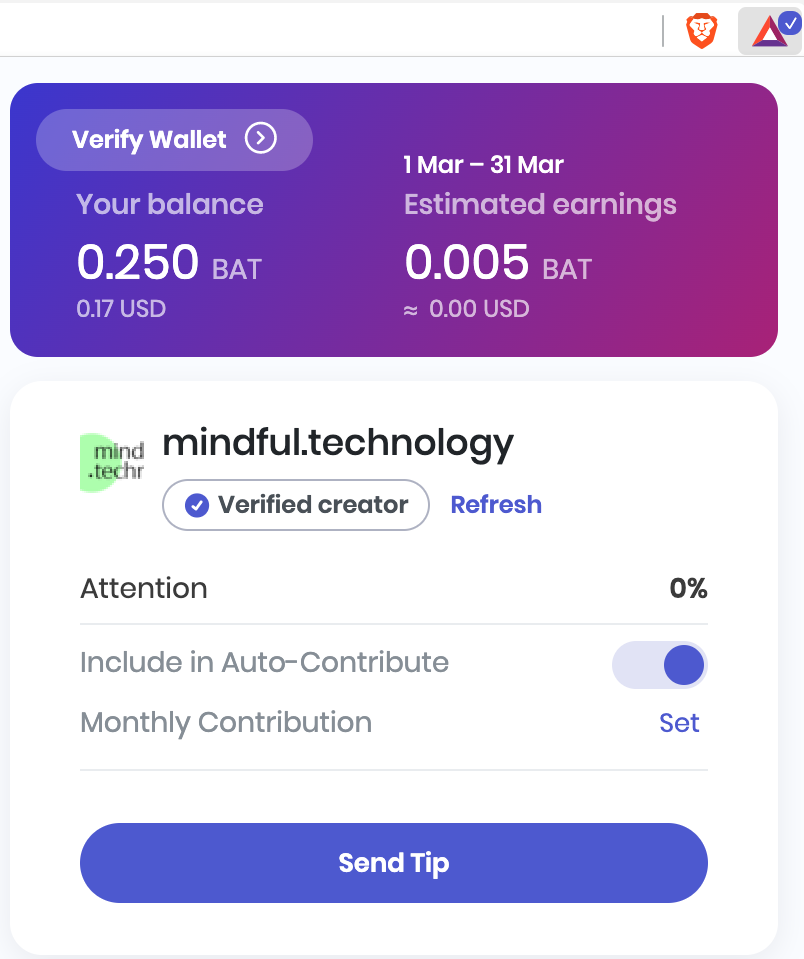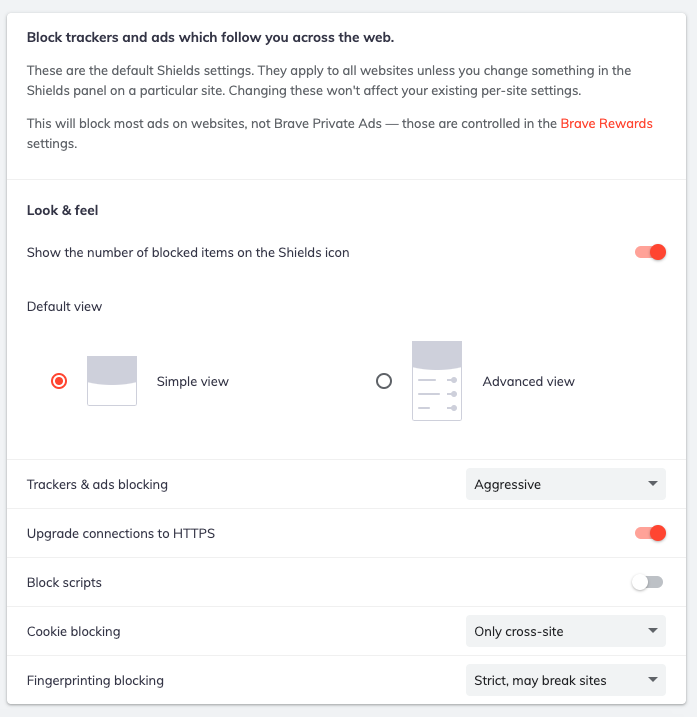I’ve been using Brave for roughly a year, tempted by the promise of increased privacy along with improved speeds and performance.
It’s been relatively smooth sailing along the way, but is it worth making the switch from more popular browsers such as Chrome or Firefox?
What does the Brave browser have to offer, and does it live up to its reputation as a great option if you’d like to avoid being bombarded with adverts?
Our in-depth Brave browser review aims to answer any questions you may have, as well as helping you to decide whether it’s worth switching or not.
What is Brave?
Brave is an open-source browser which has seen more than 50 million users as of December 2021. It uses Chromium as a basis, such as popular options like Google Chrome, Microsoft Edge, and Opera.
It’s available on Windows, macOS, and Linux, as well as iOS and Android.
The browser ties into a cryptocurrency-based ecosystem that aims to pay the user directly for any adverts seen on the platform. This is known as BAT, or the Basic Attention Token.
Their whitepaper argues that;
Digital advertising is broken. The marketplace for online advertising, once dominated by advertisers, publishers and users, has become overrun by “middleman” ad exchanges, audience segmentation, complicated behavioural and cross-device user tracking, and opaque cross-party sharing through data management platforms.
They see ‘BAT and associated technologies as a future part of web standards, solving the important problem of monetizing publisher content while protecting user privacy’.
As such, privacy is an important aspect of their business model, which is why they aggressively target trackers and block ads. (After all, they’d prefer to offer their own adverts.)
BAT can be bought or sold on many major exchanges, or completely ignored if you’d prefer.
I tried out earning BAT via the browser, but it’s a painful task that will take aeons to reap any serious reward. (Especially since they cut the rate of earning significantly since I first started using Brave.)
Eventually, I decided to opt for no ads whatsoever. It’s a cleaner experience overall, even if the ads are hardly intrusive.
BAT as an alternative funding model to adverts
BAT can also be useful even if you prefer an ad-free experience. You can use BAT to fund websites such as this one. Mindful.technology is now registered to receive BAT, so if you do use Brave, you can tip us BAT to support our future writing efforts.

The auto-contribute option in Brave automatically distributes a little of your BAT amongst the websites you spend time on. You can also send a one-off tip or set up a monthly contribution.
Brave Browser: Initial Thoughts
I’d been using Google’s Chrome browser paired with the privacy-focused DuckDuckGo search engine before making the switch to Brave, and I decided to give it a shot due to the enhanced security that is heavily advertised with the latter.
For the purposes of this review we’re focusing on the desktop version of Brave, which was primarily tested on macOS.
Moving Over to Brave
As I switched over from Chrome, it was easy enough to get to grips with the Brave layout. You’ll be able to import bookmarks, extensions, and saved passwords. I had no issues, and it’s probably a good idea to move some of your personal data away from Google as soon as possible.
After all, Google’s main business is online advertising, and our personal data is the product. (Their 2021 revenue was $257.6 billion, a huge 41% increase from 2020.)
The User Experience
The user experience is unparalleled while using the Brave browser.
Imagine browsing YouTube with no ads, or web pages loading properly without creaking under the weight of hundreds of videos that have nothing to do with what you’re trying to access. It can sometimes be hit and miss, but it’s better than using another browser, even with an ad block or an extension installed. You won’t have to mess around with the settings, and it’s compatible with almost any device.
It undoubtedly works, as evidenced by the sheer number of trackers and ads blocked over the course of the year:

The browser claims that it works out to over four hours saved due to faster loading times, which also helps to lower my overall digital footprint.
Brave Browser: Features
There are lots of nifty features if you use the web a lot. For example, it will automatically detect when a page is unavailable and will offer to search the Wayback Machine for a backup, which is always handy.
Speedreader removes unnecessary elements from pages it recognises as articles and displays them in a simplified format.
It claims to be three times faster than Chrome, and that might be true in extreme circumstances, but I didn’t notice web pages loading much faster.
Then there’s the sheer number of trackers and ads it has successfully blocked. In the time since I started writing this review, it has already worked to block an additional 4,900, while serving none of their own.

In fact, I’ve gotten used to seeing no ads whatsoever, which makes the internet much easier to navigate after setting the browser to aggressively target everything.

Pros and cons for Brave
If you’d prefer, we’ve condensed our experiences with the Brave browser into a range of pros and cons.
Pros
- Great for privacy, blocking ads and trackers
- A range of additional privacy features within the settings
- Speedy and lightweight
- Easy to switch over from popular browsers
Cons
- Zero adverts ‘seems’ like a good idea, but what if it’s the main method of monetization for a site/online service?
- It’s been argued that Brave is somewhat parasitic, given they overlay their own ads over content produced by others
- Earning crypto via ads is pretty gimmicky, and the payment rates are extremely low
- BAT payment rates also vary depending on your region
Brave Browser: Final Thoughts
I’ve been using Brave browser happily over the past 12 months, even if the cryptocurrency ecosystem hasn’t been a major factor in my decision to do so. (You’ll find many users shilling for any project in which they’ve invested heavily, and Brave is no different.)
However, I own no BAT, and have no plans to add any tokens to my wallet anytime soon. Instead, I’m focused on using the browser itself, and any potential benefits of doing so.
A lack of adverts and trackers is the main selling point, and is advantageous if you’re worried about the amount of data you’re giving away every time you boot up your computer.
However, they would prefer to serve their own ads to the user, even if it is a better proposition than the current model in use.
I still think it’s worth testing out for yourself, especially if you’re hoping for a small performance boost, or you would like to improve your online privacy.